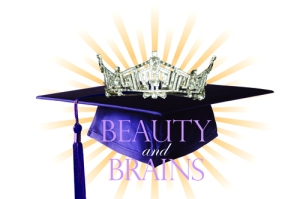Learning Theory Reflection
Through the Introduction of formal education Instructional Design I have obtained a wealth of knowledge that will be beneficial to my success as a Human Resource Training Director; which is my ultimate goal. While studying the most valuable and striking piece of information I have learned in regarding how people learn is Ertmer & Newby (1993) development in learning a secondary language is difficult because children who have little or no exposure to language in the early years often have trouble acquiring language later on, even with intensive language instruction. In my own learning development struggling to learn a second language has been a mystery up until this course. I now understand how to move forward with learning a second language as an adult. Being a cognitive learner by nature will need to be adjusted to a behavioral learner to successful accomplish learning Spanish. Based on learning how there are barriers that exist for even the most intelligent student due to the topic the approach taken going forward will be to create materials in the simplest form and build upon skill throughout the course as I am able to assess the pace of learning each student has. As stated by (Potter, 2000; Lim, 2001) it is necessary for the instructor to conduct a “learn how to learn online” session.
As stated by Ertmer & Newby (1993) key elements include the way that learners attend to, code, transform, rehearse, store and retrieve information (p. 52 ). Continuing my education will be a lifelong process as I enjoy learning and growing my knowledge of not only my profession, but also various other topics of interest such as bilingual studies, finance, and operations management. Barriers which once existed causing frustration as to why I was not able to learn one subject as quickly as I was able to learn most are no longer a concern. Multiple resources such as, social interactions; varied learning techniques according to the subject; knowledge of learning theories; networking and social resources will now be a regular addition to my learning process. Ormrod, Schunk, & Gredler (2009) conclude Vygotsky “considered the social environment to be critical for learning and thought that social interactions transformed learning experiences. Social activity is a phenomenon that helps explain changes in consciousness and establishes a psychological theory that unifies behavior and mind.” (p. 191). Immediately being able to identify the cause of barriers are now able to be controlled through simple analysis of the cause and implementing changing my course of learning techniques. The next goal is to test my learning theory knowledge by attempting to learn Spanish once more utilizing behaviorist learning theories, style and techniques.
Regarding the connection between learning theories, learning styles, educational technology, and motivation I have learned they are all connected. To be a successful Instructional Designer knowledge of all the components must be present. The art of being able to guide others in an profession requires knowledge of the subject matter to fully understand and educate others. Keller, J (1999) Educators can manage learning environments to stimulate and sustain motivation, even though they cannot control it (p. 47). Understanding how a student learns, being able to identify how to apply styles of learning to course design, when to motivate a student and which technology resources are best to deliver for success is what will make a successful Instructional Designer and Trainer.
As I continue mastering developing Instructional Design for my Human Resource employees I will be able to create multiple course materials to assist each learner receive the benefits of continues education. I agree, Ertmer & Newby (1993) we also need adaptive learners who are able to function well when optimal conditions do not exist, when situations are unpredictable and task demands change, when the problems are messy and ill-formed and the solutions depend on inventiveness, improvisation, discussion, and social negotiation (p. 63). Although it is my responsibility as a Instructional Designer and Trainer of professionals there is also a great deal of responsibility employees must take in their own continued education to ensure they are able to grow in their careers. Providing the resources and a variation of course materials is the goal because the success of the student is a direct reflection, in most cases, of the course design.
The characteristics of an intrinsically motivated learner Ormrod, Schunk, Gredler, (2009) are:
- Maintain attention and focus on the task (cognitively engage)
- Show creativity
- Seek more opportunities and challenges related to the task
- Strive for deeper understanding
- Frequently evaluate their own progress
Ormrod, Schunk and Gredler (2009) says “students learn effectively and engage in more productive classroom behaviors when they are intrinsically rather than extrinsically motivated to learn and achieve” (p.254). The two above mentioned references to course text are going to be at the forefront of my facilitating and design of course materials for my students. Their success will increased with the knowledge obtained regarding motivational and theoretic learning’s. Both the students and myself will become more successful and retain more to become better subject matter experts.
References:
Cherry, K. Problem-Solving Strategies and Obstacles, About.com. Retrieved from
Cherry, K. What Is Cognitive Psychology?, About.com. Retrieved from
http://psychology.about.com/od/cognitivepsychology/a/problem-solving.htm
http://psychology.about.com/od/cognitivepsychology/a/problem-solving.htm
Johnson, L., Adams Becker, S., Estrada, V., and Freeman, A. (2015). NMC Horizon Report: 2015 Higher Education Edition. Austin, Texas: The New Media Consortium.
Keller, J. M. (1999). Using the ARCS motivational process in computer-based instruction and distance education. New Directions for Teaching and Learning (78).
Keller, J. M. “The Systematic Process of Motivational Design.” Performance and Instruction,1987b, 26 (9), 1–8.
Laureate Education (Producer). (n.d.). Information processing and problem solving [Video file]. Retrieved from https://class.waldenu.edu
Laureate Education (Producer). (n.d.). Information processing and the brain [Video file]. Retrieved from https://class.waldenu.edu
Laureate Education (Producer). (n.d.). Motivation in learning [Video file]. Retrieved from https://class.waldenu.edu
Lim, C. P. (2004). Engaging learners in online learning environments. TechTrends: Linking Research and Practice to Improve Learning, 48(4), 16–23.
Mayer, R., Wittrock, M. (2009) Problem Solving, Education.com Retrieved from
Ormrod, J., Schunk, D., & Gredler, M. (2009). Learning theories and instruction (Laureate custom edition). New York: Pearson.
Pappas, C. (2015). Instructional Design Models And Theories: Keller’s ARCS Model Of Motivation. Retrieved from http://elearningindustry.com/instructional-design-models-and-theories
Small, R. V., and Gluck, M. “The Relationship of Motivational Conditions to Effective Instructional Attributes: A Magnitude Scaling Approach.” Educational Technology, 1994, 34 (8), 33–40.
The New Media Consortium Publications: http://www.nmc.org/publications
Visser, L. The Development of Motivational Communication in Distance Education Support. Unpublished doctoral dissertation, Educational Technology Department, University of Twente, the Netherlands, 1998.
http://www.education.com/reference/article/problem-solving1/
Ormrod, J., Schunk, D., & Gredler, M. (2009). Learning theories and instruction (Laureate custom edition). New York: Pearson





